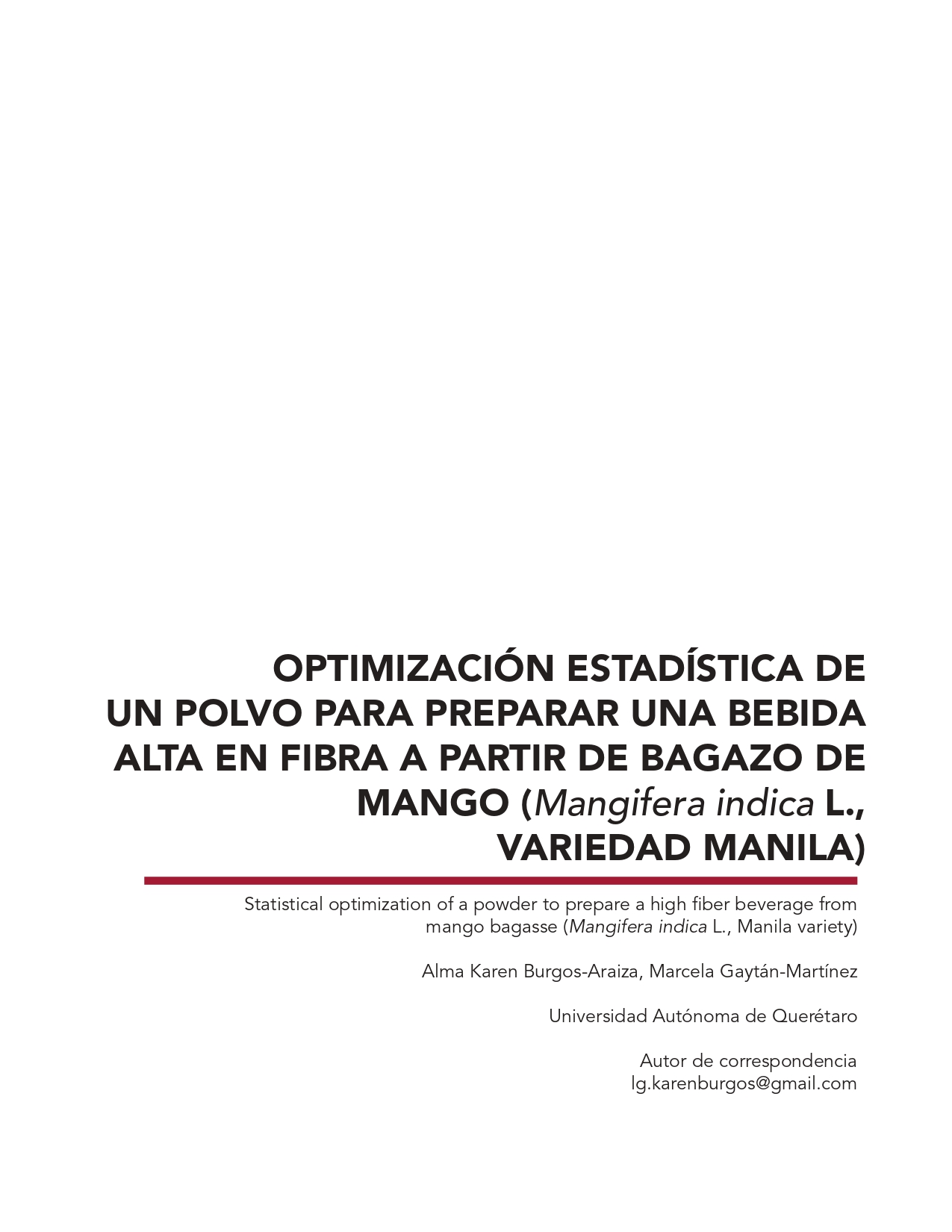Abstract
The objective of the present study was to optimize the formulation of a powder to prepare a high fiber beverage. The source of fiber used was mango bagasse (Mangifera indica L., Manila variety), considered a by product of themango pulping industry. A 33 factorial design was used for the development of the product, where the independent variables were the percentages (0.5, 1 and 2%) of xanthan gum (XG), carboxymethylcellulose (CMC) and sili- con dioxide (SD). The response variables were: viscosity, sedimentation index, soluble solids and color. With the results obtained, the for mulation was optimized looking for a minimum viscosity and minimum sedimentation index, resulting in a formulation with 0.5% XG, 0.5% CMC and 0.5% SD, with an R2= 0.85. The optimized formulation of the beverage (OB) had a total dietary fiber content of 40.90±0.19%, of which 15.03±1.12% is soluble fiber. The results show that response surface analysis is an adequate and practical tool for the optimization of food products; In addition, mango bagasse has potential as a source of fiber for the development of beverages.
This work is licensed under a Creative Commons Attribution-NonCommercial 4.0 International License.

